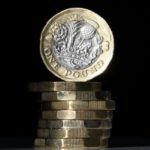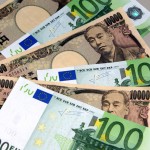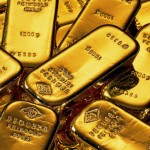Precious metals advanced during trading in Europe today, amid talk of relaxed import limitations in second top-consumer India. Elsewhere, risks over tensions in Ukraine are in the focus ahead of the presidential election on May 25th. Meanwhile, copper futures reached a three-month high during early trading in Europe today, as China demand outlooks grew when the government expressed commitment to economic reforms.
Gold futures for delivery in June traded for $1 304.5 per troy ounce at 12:51 GMT on the COMEX in New York today, adding 0.86%. Daily high and low stood at $1 305.7 and $1 289.5 per troy ounce, respectively. Last week the contract gained 0.46% as risks over Ukraine supported, amid mixed signals by the US economy.
Meanwhile, silver contracts for July stood at $19.655 per troy ounce, adding 1.69%. Daily high and low were at $19.685 and $19.310 per troy ounce, respectively. Last week the contract rose by 1.13%.
Reserve Bank of India Governor Raghuram Rajan said the new finance minister of the country will decide whether to ease restrictions on importing gold. The new PM Narendra Modi is seen as more business-friendly, and speculation of improving trading conditions in the worlds second-top gold consumer boosted the precious metal.
“India looks positive,” said for Bloomberg Bernard Sin, head of currency and metal trading at MKS (Switzerland) SA. “There may be signs of lifting restrictions.”
Ukraine crisis
Russian President Vladimir Putin ordered for troops to move withdraw from the border for the third time in recent weeks. Previously, NATO and Ukraine could not confirm a move-out had actually taken place, and nothing indicates this will change this time either.
The Kremlin statement added that Mr Putin “welcomes the first contacts between Kiev and the supporters of federalization” of Ukraine, in address of the peace talks, which began in Kiev last week. Rebels were not represented on the “round table,” but some advocates of more regional autonomy did take part.
The talks are part of the Organisation for Security and Co-operation in Europe’s “roadmap” out of the crisis and an attempt to defuse tensions before the presidential elections on May 25th. The US threatened more sanctions if “Russia or its proxies” try to ruin the vote.
Meanwhile, the conflict took more victims today, as rebels attacked a government-controlled checkpoint near the separatist bastion of Sloviansk. The attack left one soldier dead and one injured, the defense ministry was quoted as saying.
US economy
The overall improvement in the US economy has boosted equities demand and pressured haven appetite recently. Housing data, jobless claims and consumer inflation all marked better than expected last week, some recording historic highs, and although industrial production and retail sales posted sluggish results, stocks remained near record-high levels on Wall Street as trading for the week closed.
Assets at the SPDR Gold Trust – the largest gold-backed exchange-traded fund, returned to the two-week losing streak on Friday, following a slight recovery on Thursday. Holdings were at 781.98 tons as trade for the week closed, dropping 0.27 tons from the previous day. The fund has lost more than 12 tons over the last two weeks, reflecting the lowering investor haven demand.
Last week, Goldman Sachs confirmed its previous assessment that gold will drop to $1 050 per troy ounce in a year’s time, pressured by the global economic recovery and a stronger dollar.
Elsewhere, the euro fell to a ten-week low at 1.3649 EUR/USD on Thursday and logged a weekly drop of 0.49% against the greenback, closing for 1.3694 EUR/USD. With every sizable decline in the euro the US dollar rises, which increases the cost of dollar-denominated goods for all foreign currencies.
“With generally bright U.S. economic data and Eurozone’s impending stimulus propping up dollar prospects, we are more inclined to a bearish break in gold prices,” said for Reuters Joyce Liu , analyst at Phillip Futures. “That said, the Ukraine crisis continues to provide underlying support and any hint of escalation may spur gold prices above $1,300 again.”
Copper futures
Copper futures for settlement in July added 0.68% to trade at $3.1685 per pound at 12:52 GMT today on the COMEX in New York. Prices shifted in a daily range between $3.1405 and $3.1840 a pound, reaching the highest level in almost three months. The contract added 2.09% last week as physical demand in top-consumer China, in addition to positive data from the US boosted the red metal.
The Chinese government revealed plans to accelerate the economic reform, which is aimed at improving growth in the world’s second-top economy. China consumes more than 40% of the world supply of copper, and the news impacted the red metal, boosting contract prices.
Earlier data from China revealed industrial output, as well as retail sales and investments were slightly slowing. However, peaking construction activities, in addition to government stockpiling of the metal supported copper and made possible an 8% gain since mid March.
“It’s been an impressive rally from the March lows with a very strong seasonal backdrop to copper … total inventories are also declining very quickly at the moment,” said for Reuters Mark Keenan, analyst at Societe Generale in Singapore.
Also stemming positive sentiment for the metal, Japan’s core machinery orders, which exclude ships and utilities, for March grew by 19.1% since February, when an 4.6% contraction was recorded. On an yearly basis orders increased by 16.1%.
This week will reveal manufacturing PMI figures for China, the EU and US, with expectations of slightly lesser contraction in China and steady growth in the EU and US.
Elsewhere, Russia’s Norilsk Nickel, which is ranked among the top 10 copper producers worldwide, revealed plans to invest about $1 billion in a rich copper mine. The produce is aimed at supplying the dominant China market. The mine will be able to produce 10 million metric tons of ore a year. The project will have its go-ahead, as the company reached a preliminary deal with “a key Russian development institution on funding the project,” First Deputy Chief Executive Officer Pavel Fedorov said for Bloomberg.





